Check out this photo essay to see how cooperation with Ameren and vital help from volunteers has enabled us to transform part of our eastern border.
Please click on the photo to start the slide show.

This picture is from the Eastern side of Deer Creek under Ameren’s powerlines last September. It was completely thick with nice and full invasive bush honeysuckle, with quite a few mature, treelike specimens that had been here for 40+ years. I thought to myself of the many…..MANY hours that would be going into removing these shrubs.
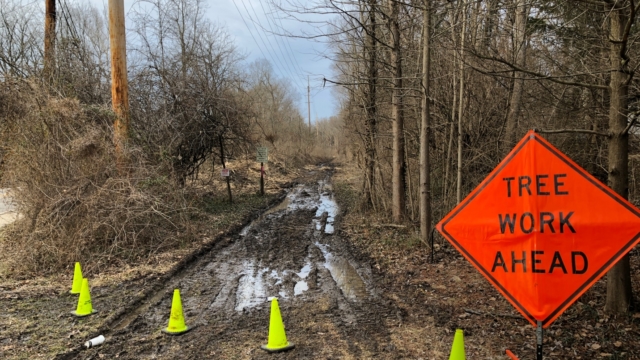
One morning in February, I passed the entrance to the Ameren right of way and noticed this sign. Curious as to what was happening along our borders, I investigated. Ameren employees informed me that because of previous storm issues, that they planned to replace all the poles along this entire line.

Their intentions were to remove all trees and shrubbery in their way. For most of our property they would only be removing some of the bush honeysuckle along our edge and putting down turf grass seed afterwards. This would not have been the most ecologically sound idea for our property and might have led to even more invasive species.
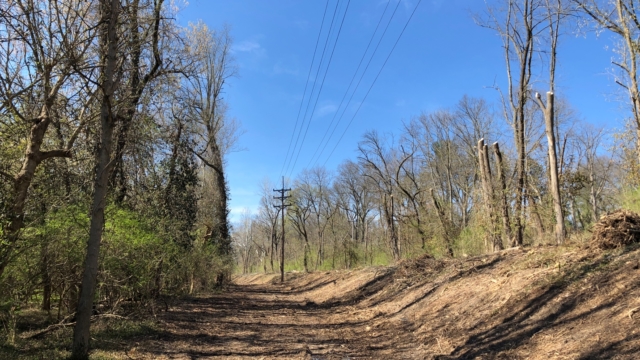
After conversations with the project supervisor, we agreed to help each other. They would remove the bush honeysuckle more thoroughly with a large forestry grinder, and we would put down a native grass/sedge seed mix. This would let Ameren still use broadleaf herbicides to keep trees and shrubs from growing under their powerlines and help prevent erosion of the area.
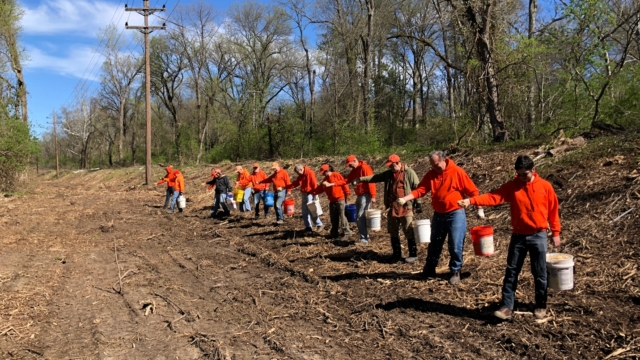
As soon as we were able to get seed for the project, we waited for a day when our volunteer army in orange could help sow the seed ahead of a light rain. The rain would help the seed get worked into the soil, making good contact for germination.
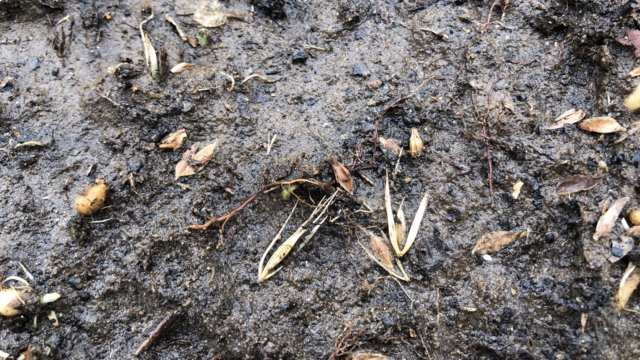
These grass and sedge seeds, along with a mix of four native annuals as a cover crop, were sown April 12th and lightly rained upon the next day. These broadleaf annuals will fill the gaps where invasives and weeds could have out competed our seedling grasses. It will take a few years before the grasses fill this area, so these temporary, annual plants will be helpful in the interim.

A month later the first of the cool season grasses were beginning to germinate amongst all the honeysuckle remains. More and more species popped up in the following weeks, including the annual broadleaf plants.
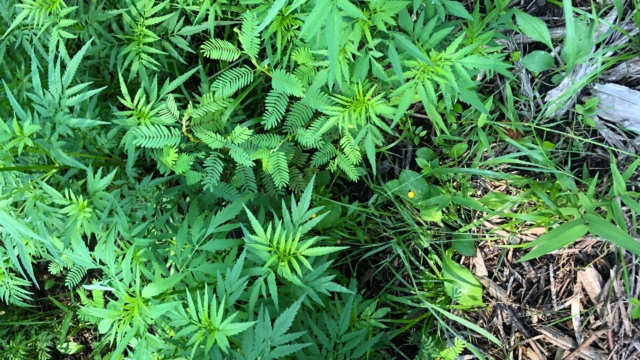
Here you can see a variety of the first year grasses and sedges in the understory of the passing annuals that have only one year to live. Enough sunlight filters down to them through the thin leaves above to survive.
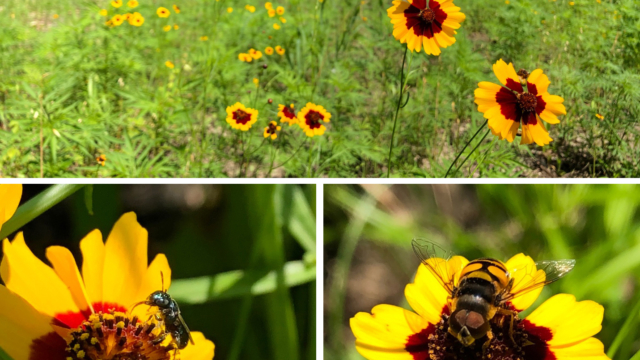
The first of the annuals to bloom was plains Coreopsis, Coreopsis tinctoria, back in early July. It quickly became a welcome supply of nectar and pollen for many different species of LREC pollinators.

Partridge pea (left) and black eyed susan bloomed shortly after and attracted many bumblebees! The next plant to bloom will be showy tickseed (right), which has become very dominant in the moist, swale like conditions of the path Ameren made. Showy tickseed, Bidens aristosa, is a very popular flower with pollinators. Many different species of butterflies and bees visit it.
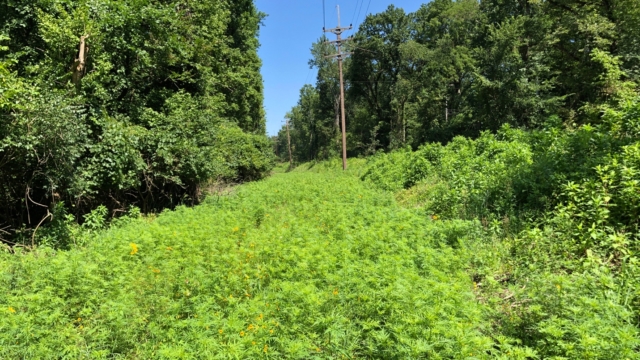
The showy tickseed has become dominant to the point that we will have to dead head a good amount of it once it has finished blooming for the pollinators. Dead heading it will prevent it from going to seed again and competing with our grasses next year.

This is to give you an idea of what our patch of showy tickseed will look like shortly. This is at a small prairie reconstruction in Alton, IL.

And of course, ecological restoration work is never done. Bruce, one of our Friday volunteers, is removing Japanese hops to keep them from invading and crowding out our first year seedlings. We could not do all this work maintaining quality habitat for wildlife in this urban landscape without all our volunteers.
Prev
Next